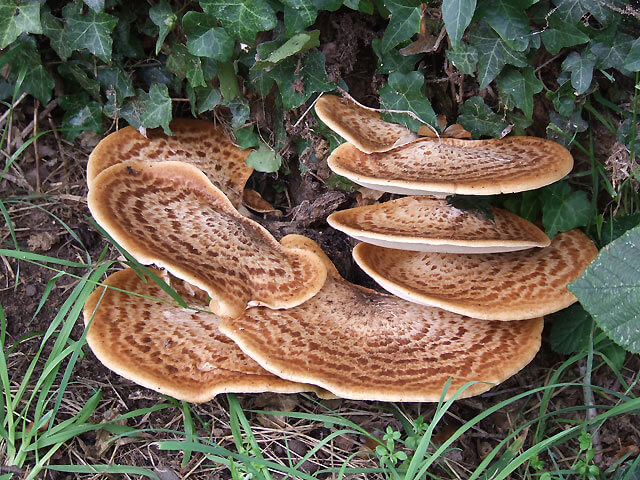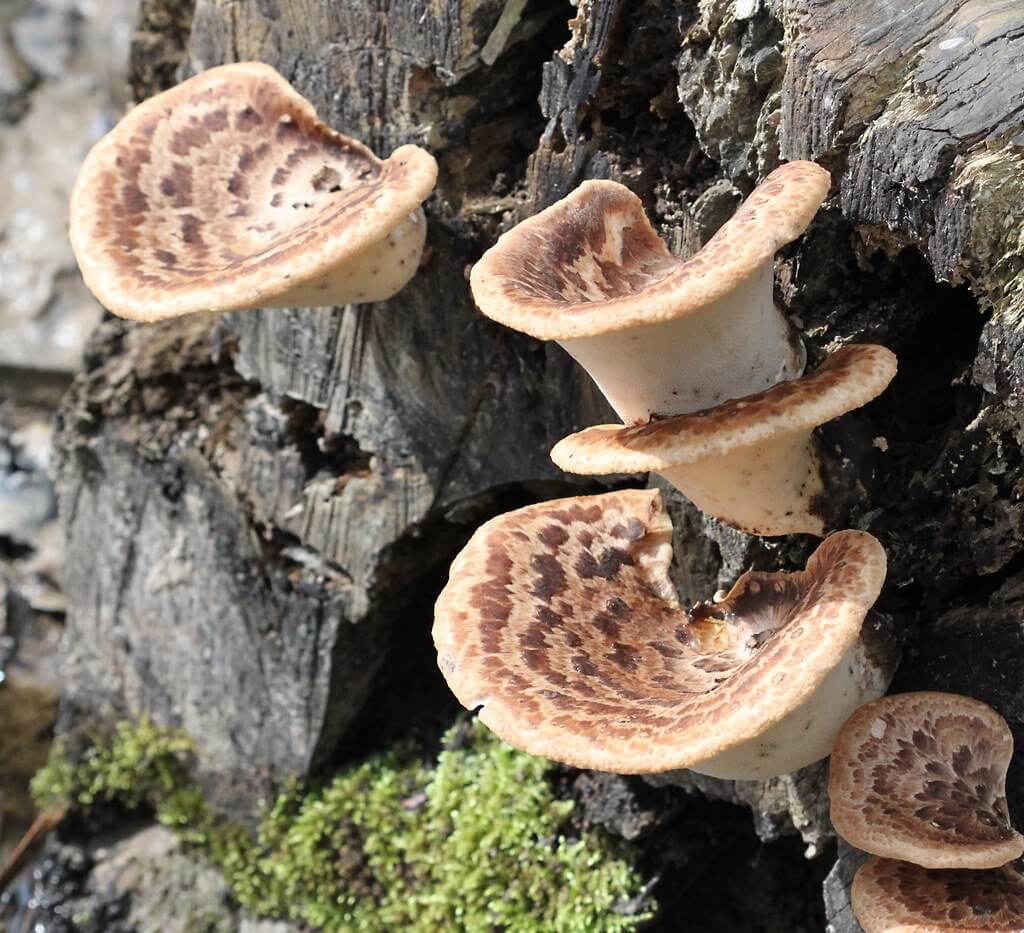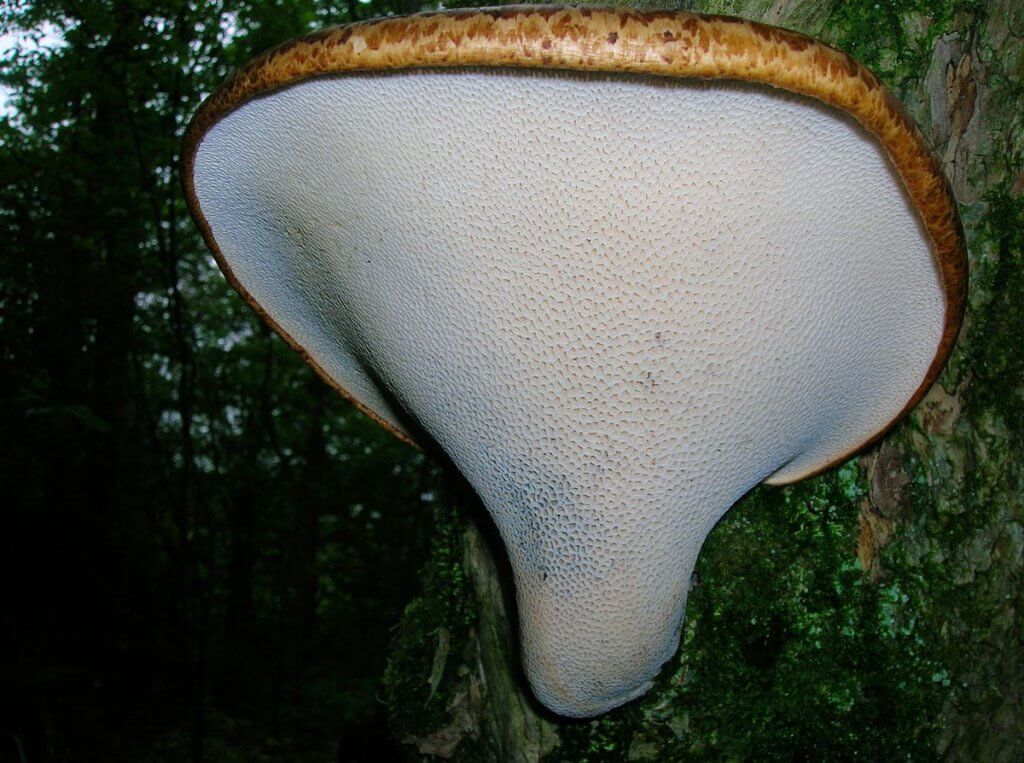
(Photo by: Roger Kidd/Wikimedia Commons)
Walk around your local forest and you’ll probably spot some wild mushrooms growing on tree stumps. Take a closer look at these mushrooms, you might be lucky enough to find some edible ones. Dryad’s saddle (Polyporus squamosus) or pheasant back mushroom is one of these valuable wild edibles. In the wild, you can recognize these tasty yet underrated mushrooms by the unique pore patterns on their underside as well as the distinctive brown patterns on their light tan caps.
Edibility and culinary use
Dryad’s saddle has a mealy yet pleasant flavor. These mushrooms also have a distinctive aroma that’s reminiscent of watermelon rinds. They taste best when they’re young and tender. As they mature, they become tougher that they’re impossible to chew. Older dryad’s saddle can be used to make a soup base or vegetable broth, but their flesh can’t be eaten as they’ll be too tough and leathery.
Once harvested, immediately wash and clean the young mushrooms before cooking them. Dryad’s saddle tastes best when roasted or sauteed. You can also boil them and add them into stews and soups. Alternatively, they can also be collected, dried, and powdered to be consumed later. You can use this powder to enhance the flavor of soups, gravies, bread, and even tempura batters. Lastly, you can store the mushrooms in a paper bag and freeze them for later use.
Health benefits

(Photo by: Phil Sellens/Flickr)
Much like other wild mushrooms, dryad’s saddle can be a nice addition to your daily diet. These mushrooms are a wonderful source of protein and other essential nutrition. Dryad’s saddle contains vitamins B complex, C, and D as well as essential minerals such as iron, phosphorus, potassium, copper, and selenium. They’re also low in sodium, fat, and cholesterol, making them great healthy food.
Dryad’s saddle is also high in antioxidants. For this reason, eating these mushrooms can help your body fight off free radicals as well as prevent tumors and cancer. These antioxidants can also boost your immunity against common diseases, such as cold and flu. Dryad’s saddle is also rich in dietary fiber, so its’ great for promoting a healthy digestive system. Additionally, eating these mushrooms will also make you feel fuller longer, thus reducing your overall calorie consumption. Lastly, adding these wild mushrooms into your daily diet can also help manage your blood sugar levels, reduce cholesterol, regulate your blood pressure, and improve your overall cardiovascular health.
Cultivation
You can find dryad’s saddle growing on fallen logs, tree stumps, or dying hardwood trees. They’re typically found around April and May, but it’s not uncommon to find them growing in the summer and early fall as well. If you’re lucky enough to find these brown mushrooms growing in the wild, take note of their location. They usually appear in the same place each year until they’ve consumed all the wood.

(Photo by: Rosser1954/Wikimedia Commons)
However, if you’re not so lucky, you can either buy them from the supermarket or grow them yourself. Though they’re a bit rare, you can buy dryad’s saddle growing kits online. These kits usually contain mushroom spawns that are ready to cultivate and an instruction booklet. Once you have these spawns, you need to get a hardwood log to grow them. Soak the log in water for 3 to 7 days to make it more suitable for mushroom cultivation. Then, drill holes into the log and plug your spawns. Keep the log in a cool, moist, and shaded place.
Just like in the wild, your mushrooms will begin to fruit around April and May. they will continue to fruit until early fall. Remember that only young mushrooms are suitable to eat. You can either leave older, tougher mushrooms alone or harvest them and boil them to make a soup base then discard the flesh. Much like in the wild, your colony will continue to provide you with an abundance of fresh and tasty dryad’s saddle mushrooms for years to come.
Cautions
There are no known side effects from eating this mushroom. There are no poisonous look-a-likes either. You just need to be careful to only pick young mushrooms for eating as older mushrooms often become infested with maggots.
Conclusion
Dryad’s saddle is a very underrated wild edible. These mushrooms are tasty and nutritious but due to their lack of popularity, they’re often ignored. Dryad’s saddle mushrooms can be a delicious addition to any meal while providing you with great nutritional contents. Just make sure to pick young specimens as older ones tend to be too tough to chew.
---------------
Writen by Cornelia Tjandra
Cornelia is a freelance writer with a passion for bringing words to life and sharing useful information with the world. Her educational background in natural science and social issues has given her a broad base to approach various topics with ease. Learn more about her writing services on Upwork.com or contact her directly by email at cornelia.tjandra@gmail.com
Many of our readers find that subscribing to Eat The Planet is the best way to make sure they don't miss any of our valuable information about wild edibles.
See our privacy policy for more information about ads on this site







One Response
Thank you! I doubled with your info and that of Adam Haritan – Wild Foodism, to learn more about this mushroom before deciding to consume it after finding it on my property this morning. It was delicious by the way!